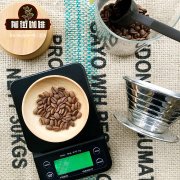Introduction to the Regional characteristics of Arabica Coffee Bean is Arabica Coffee Bean a High-quality Coffee

Professional coffee knowledge exchange more coffee bean information please follow the coffee workshop (Wechat official account cafe_style)
The main categories of coffee beans that must be known
The common coffee tree species are mainly divided into two categories, Arabica coffee beans (Arabica) and Robusta (Robusta). There are many small species under it, so we won't say that some kind of coffee is Arabica coffee beans or robusta beans, but with subdivided coffee beans.
Arabica
All the world's high-quality coffee comes from Arabica, accounting for about 70% of the world's coffee production. It is rich in flavor, high-quality acidity and flower fragrance, but the planting conditions are harsh, need to be planted in high-altitude areas, the growth is relatively slow, and very easy to be infected with diseases and insect pests.
Robusta
Robustadow is planted at low elevations and has no high requirements for the natural environment for growth. its yield is twice that of Arabica trees, so it is easy to grow and has strong resistance to diseases and insect pests. As the content of chlorogenic acid and trigonelline (the source of bitterness in coffee) in Robusta is twice that of Arabica coffee beans, and the caffeine content is also high, it tastes natural and bitter, and most of them will not drink alone, so it is the main raw material of instant coffee. Some Italian coffee will also be mixed with a certain proportion of robusta for better performance of espresso fat.
Coffee can be found in more than 50 countries and regions in the world, and the areas suitable for coffee cultivation cover parts of the Americas, Africa and Asia. It is located within the equator, extending to Mexico and Myanmar in the north and Zimbabwe and Brazil in the south.
Where the coffee beans come from will greatly affect its flavor.
You may like the juicy feel of Ethiopian coffee, the natural acidity of Tanzanian coffee, the balance and sweetness of Guatemala, or the earthy smell of Indonesia-but unless you've tried coffee beans in these areas before, you won't know where they come from.
Important Notice :
前街咖啡 FrontStreet Coffee has moved to new addredd:
FrontStreet Coffee Address: 315,Donghua East Road,GuangZhou
Tel:020 38364473
- Prev

Is it better to make coffee by hand slowly or quickly? What are the factors that affect the flow rate of hand coffee?
For information, please pay attention to the coffee workshop (official Wechat account cafe_style) the basic things you need for hand coffee are: hand pot, filter paper, filter cup, thermometer, timer, electronic scale and bean grinder. Not only the taste of the coffee bean itself, but also the temperature, flow rate and direction of the water, the choice of filter paper, the particle size of the powder and many other factors will affect the taste of brewing. Editor Dang
- Next

Don't say you drink Arabica coffee if you don't know the kinds of Arabica coffee beans.
Professional coffee knowledge exchange more coffee bean information please follow the coffee workshop (Wechat official account cafe_style) Arabica varieties originated in Yemen and have been grown in the Arab region for more than a thousand years. Arabica coffee beans here are known as the highest quality coffee beans, with more subtle flavors and more than their distant relatives, Robusta.
Related
- Beginners will see the "Coffee pull flower" guide!
- What is the difference between ice blog purified milk and ordinary milk coffee?
- Why is the Philippines the largest producer of crops in Liberia?
- For coffee extraction, should the fine powder be retained?
- How does extracted espresso fill pressed powder? How much strength does it take to press the powder?
- How to make jasmine cold extract coffee? Is the jasmine + latte good?
- Will this little toy really make the coffee taste better? How does Lily Drip affect coffee extraction?
- Will the action of slapping the filter cup also affect coffee extraction?
- What's the difference between powder-to-water ratio and powder-to-liquid ratio?
- What is the Ethiopian local species? What does it have to do with Heirloom native species?

